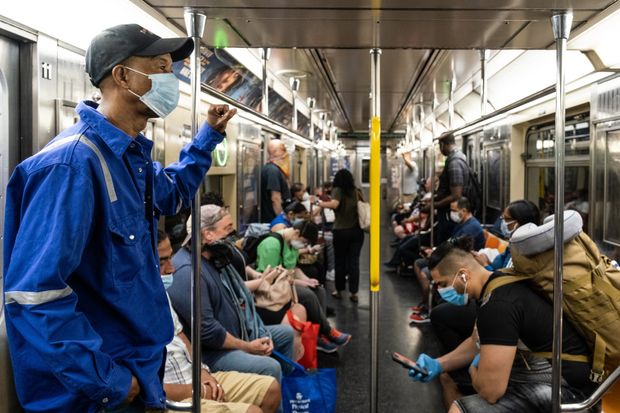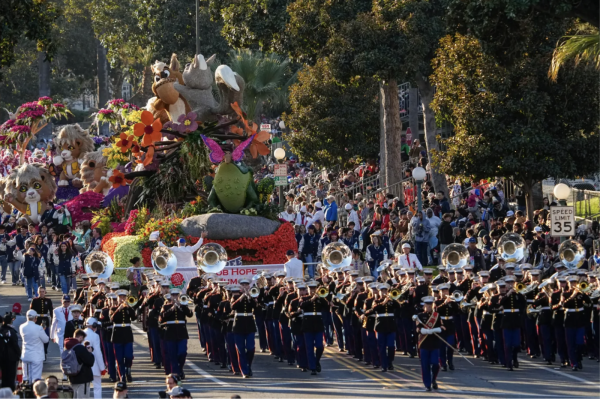Public Transit Services Struggle Financially as Ridership Rates Fall to Historic Lows
As a result of the Covid-19 pandemic, relying on public transport has become significantly more difficult. Transit agencies have begun limiting the number of passengers per bus/train, leading to significantly less fare revenue. Typically carrying from 50 to 100 passengers, buses in Seattle are now limited to between 12 and 18 people. According to Time Magazine, home care worker Brittany Williams says she constantly misses two to three busses due to them being at full capacity. While the commute took half an hour prior to the pandemic, Williams now needs over an hour. The safety of using public transport has also come into question. Though ridership limits may reduce the chances of spreading and contracting the virus, Williams occasionally exits the bus at a far stop due to concerns for her seven-year-old son. Brittany Williams, along with others who depend on public transit systems, are now facing trouble making their daily commutes. However, while the spotlight is on the patrons of public transport systems, attention is rarely paid to the devastating effects the pandemic has on public transport agencies. Due to low ridership limits and the fear of contracting the virus, passenger rates in New York have fallen as much as 92%, a historic low. If there is no further action taken to rescue these agencies, many public transit systems may disappear altogether—leaving Brittany Williams and millions of other people with no options for commuting.
The problem doesn’t only extend to the inconvenience for riders. King County Metro, one among numerous other transit systems, is expecting an “unprecedented loss”(Time) of over a quarter of a billion dollars due to low ridership and fare revenue. The financial aid King County Metro received was barely enough for short term survival; the agency is projecting over a $600 million revenue deficit through 2022. Caltrain rail system, another public transit system that is located in the Bay Area, is in need of over $100 million annually to stay afloat. The losses King County Metro and Caltrain rail system are facing are similar to those suffered by other agencies across the nation. Steven Higashide, the director of research at the Research and Advocacy Organization Transit Center, says that “Transit is being stretched to the brink everywhere. It’s not just in the Bay Area that agencies are facing these existential questions of how to triage service.”(Wired) With ridership limits in place, transportation systems are earning a minute fraction of the original profits. However, other than people who depend on these transit systems and occasional commuters, the mass public is avoiding most small gatherings—adding fuel to the fire. Without further relief bills passed, countless transit systems across the nation may be forced to close down.
In New York, one of the most heavily affected states by the pandemic, agencies have seen a loss of $200 million every week as ridership sinks to historic lows. The Metropolitan Transportation Authority (MTA) is facing financial crises that are likely to cause damage that will take years to recover. Bob Foran, Metropolitan Transportation Authority Chief Financial Officer, predicts that the MTA is projected to lose about $6.5 billion if the crisis continues through 2020. In March, the MTA received $4 billion from the Coronavirus Relief Act. However, another $3.9 billion is needed to cover 2020 and the beginning of 2021. The agency estimates that they will need another $16.2 billion to stay afloat until 2024, as the lingering aftereffects of the pandemic will continue to impact ridership.(New York Times) Currently, the MTA has devoted all resources to keep the agency alive. This means that cleaning work and maintenance have been put on pause. Journalists and other officials have growing concerns that with the continual revenue deficit, the New York subway system may return to the same decaying state it was in during the 1970s. To make matters worse, there are few real solutions to this problem: limiting service time can impact essential workers’ irregular commute, and raising fares will further discourage ridership. Without government interference, the future for MTA, among other transit systems across the nation, is becoming bleak. “It is highly likely that the worst-case scenario is the likely scenario,” said Nick Sifuentes, the executive director of the Tri-State Transportation Campaign.(New York Times)
As we approach the end of 2020, struggles for transit agencies continue. The CARES Act, passed in late March, gave $25 billion to transit systems. In addition, Democrats proposed the HEROES Act which included $15.75 billion on emergency funds for transportation agencies, $11.75 billion through formula aid, and $4 billion to the secretary of transportation. Despite these attempts, these funds are no more than a drop in the bucket. The MTA alone is projected to lose over $6.5 billion in 2020 and $16.2 billion through 2024. However, future relief packages should be expected, as Senate Republicans have agreed to divert part of the act’s funds for the preservation of public transportation. Without further action, Brittany Williams and other hard-working Americans may no longer be able to commute to work.

Grade: 12
Years on Staff: 3
Why are you writing for the Flintridge Press?
I want to use my affinity for writing in the Press to spread information...










